Remember smallpox? It’s worth revisiting
What’s your diagnosis?

Throughout the course of human history, one infectious disease (Figure 1) may account for more deaths than any other, perhaps all others combined.
Smallpox mortality falls between 20% and 50%. Until it was completely eradicated from the Earth in the late 1970s, it is estimated that smallpox killed at least 300,000 people worldwide during the first three-quarters of the 20th century. Most experts placed the number of deaths due to smallpox around a half a billion during its last 100 years (approximately 1877 to 1977).
 Figure 1. Smallpox in 1977 in India. Image: CDC, James Hicks
Figure 1. Smallpox in 1977 in India. Image: CDC, James Hicks It has been speculated that smallpox may have first appeared around 10,000 B.C. in agricultural settlements in northeast Africa. However, solid evidence of its origin does not exist. Smallpox is referenced in ancient Indian writings dating to 1,500 B.C. Subsequently, archeologic findings on the skin surfaces of 3,000-year-old Egyptian mummies gives credible evidence that smallpox was the cause of death. From northeast Africa, smallpox appears to have spread to southwestern Europe and then Asia. Using an estimate of 300,000 to 500,000 smallpox deaths per century, the number of those who died from the disease over the last 2,000 years could be as high as 6 to 10 billion, and that is in a world with a population that was much smaller than it is now. The total mortality could be considerably more, but in large parts of the world, records were not kept or made available.
Considering that the highly contagious smallpox virus was one of the deadliest infectious disease threats to the human race and was vaccine preventable, a global eradication campaign was launched by WHO in 1959. The campaign was successfully completed in 1977, and there has been no naturally acquired smallpox since.
Who led the campaign for the global eradication of smallpox?
A. Donald Ainslie Henderson
B. Edward Jenner
C. Ali Maow Maalin
D. Lady Mary Wortley Montagu
Answer and discussion
The answer is Donald Ainslie (D.A.) Henderson, MD (Figure 2). Henderson (Sept. 7, 1928 – Aug. 19, 2016) was born and raised in Ohio, where he received his undergraduate education from Oberlin College before receiving his MD from The University of Rochester School of Medicine and Dentistry in Rochester, New York, in 1954. Six years later, after his postgraduate training and receiving an MPH, he became the chief of viral disease surveillance at the CDC’s Epidemic Intelligence Service. In the meantime, WHO began its smallpox elimination program with some successes. However, Henderson’s office developed a plan for WHO that was ultimately used for the elimination of smallpox. At that time, Henderson became the director of the campaign, moving to Geneva, Switzerland, in 1966.
 Figure 2. D.A. Henderson, MD, left, at his HHS office in Washington, D.C., where he served as director of the Office of Public Health Emergency Preparedness, under HHS Secretary Tommy Thompson. Image: James H. Brien, DO
Figure 2. D.A. Henderson, MD, left, at his HHS office in Washington, D.C., where he served as director of the Office of Public Health Emergency Preparedness, under HHS Secretary Tommy Thompson. Image: James H. Brien, DO Field operations began in 1967, with the last case of naturally occurring smallpox reported in 1977 in Ali Maow Maalin in Merca, Somalia. Mr. Maalin was working as a cook at the time. However, he apparently was so grateful to have survived smallpox that he became a certified “vaccinator,” working in the campaign to eliminate polio from Somalia, as well as helping vaccinate against other vaccine-preventable diseases. He died in 2013 at 59 years of age from complications of malaria.
Henderson went on to have a distinguished career in public health, including as the dean of the Johns Hopkins Bloomberg School of Public Health. He received numerous awards during his career, including the Presidential Medal of Freedom in 2002. As I recall from our conversation during my serendipitous visit in 2003, he felt that he was expeditiously thrusted into the smallpox eradication project just when his career was getting started, which went on to dominate his humble legacy. He simply led the team that eradicated one of the most lethal diseases that killed billions.
We often take for granted the power of immunizations to prevent severe illnesses. The word “vaccine” stems from the original smallpox immunization, which was given by the English physician Edward Jenner in 1796, using the blister material from a case of cowpox on the hand of his patient, Sarah Nelms. He then scratched the material into both arms of his test subject, James Phipps, an 8-year-old son of one of his patients. After a couple of months, he injected the boy with material from a case of smallpox without the boy catching the disease, and the words “vaccine” and “vaccination” were born. “Vaccine” was derived from the Latin word “vacca,” meaning “cow,” and has subsequently come to mean any immunization. However, technically, we do not give “vaccines” anymore, since smallpox has been eliminated.
Jenner did not come up with the notion of using material from cowpox lesions to prevent smallpox. Apparently, many other physicians and many farmers with milk cows knew of the protective effects of having a history of cowpox in preventing smallpox, even decades earlier. Benjamin Jesty was one such farmer in the southern part of England, who used a similar method to “vaccinate” his children about 20 years earlier than Jenner. However, Jesty was neither a scientist nor a physician and did not publish his experience with this method, nor did anyone else. In my opinion, this falls under the category of “so what?” If a discovery is not shared and used to benefit all of humanity, as Jenner did, it only deserves a footnote. Jenner publicly took a great chance by intentionally exposing Phipps to smallpox after the vaccination. Had this experiment failed, Jenner’s practice could have been ruined, and if Phipps had died, he may have been criminally prosecuted.
 Figure 3. An immunodeficient child with fatal vaccinia gangrenosum. Image: James W. Bass, MD, MPH
Figure 3. An immunodeficient child with fatal vaccinia gangrenosum. Image: James W. Bass, MD, MPHMany decades before Jenner’s landmark work with the vaccine, late in the 18th century, Lady Mary Wortley Montagu, the wife of Lord Edward Wortley Montagu, had traveled to the Ottoman Empire, where Lord Montagu was assigned as the British ambassador. In 1717, Lady Montagu learned of the practice called inoculation to prevent smallpox, which used blister material from a mild case of smallpox. It had long been known that a small number of smallpox cases were much milder with a much lower incidence of death (1% to 5%), subsequently known as variola minor, as opposed to typical, severe smallpox (variola major). Because of closely related viruses, having mild smallpox conferred natural immunity to severe smallpox. Her passion for preventing smallpox formed after Lady Montagu’s brother died of smallpox, and later she had smallpox and lived but was left badly scarred. Post-smallpox scarring was typical, as the lesions created deep, scarring ulcerations. She took this knowledge of inoculation back to England and was met with significant resistance from the medical establishment. Eventually, with the help of the Princess of Wales, she was able to get the practice established and eventually accepted by conventional medicine. This practice subsequently caught on in the British colonies and persisted until the safer practice of Jenner’s vaccination (with cowpox material) became the standard.
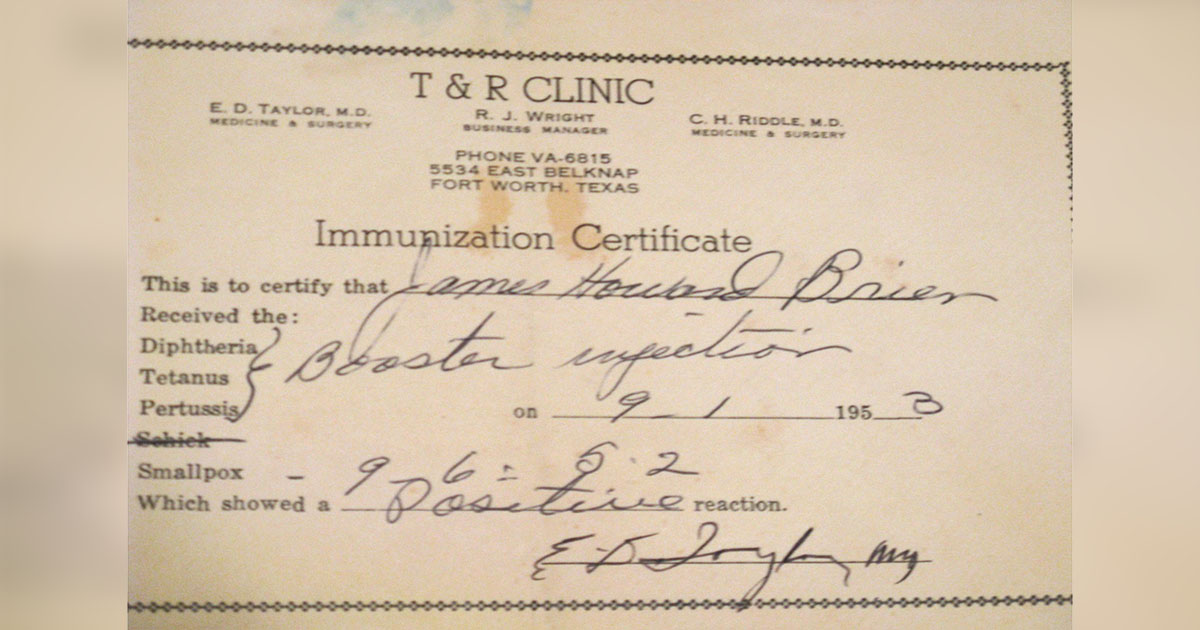 Figure 4. Documentation of my pre-school entry smallpox vaccine in 1952. Image: James H. Brien, DO
Figure 4. Documentation of my pre-school entry smallpox vaccine in 1952. Image: James H. Brien, DO Fast forward to modern times; the vaccine available today is similar to that used by Jenner, with live vaccinia virus rather than the closely related cowpox virus. The vaccine can be lethal if given to an immunocompromised patient (Figure 3), and can be spread by autoinoculation as shown last month. Routine smallpox vaccination in the United States ended in 1972, but vaccines can be brought out of storage in a time of crisis if smallpox reemerges, whether by accident or through biological terrorism. As far as I know, the last time smallpox vaccine was given to the American public was in response to the Sept. 11 attacks, when about 18 months later rapid response teams of medical volunteers had been assembled nationwide. I was on one of those teams and received my last smallpox vaccine on March 25th, 2003. My first memory of receiving a smallpox vaccine was when I was 5 years old, about to start school (Figure 4). I recall my mother keeping my hands off the vaccine site under the threat of a switch from the Willow tree in our front yard, or the belt that she routinely wore around her neck, which was a strong deterrent for me and my brother to misbehave. Along the way, I had several more smallpox vaccines, including some in the Army. These were always kept covered. I can recall one smallpox vaccine where the site was covered with a clear, annoying plastic cap that was kept taped in place.
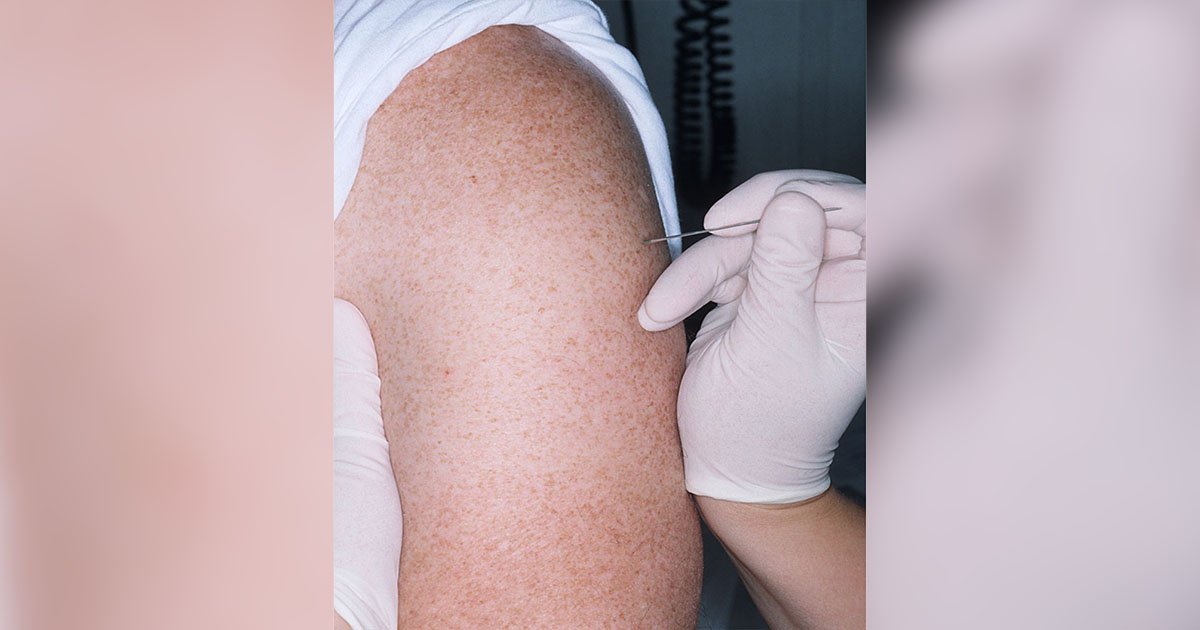 Figure 5. I received a smallpox vaccine on March 25, 2003. Image: James H. Brien, DO
Figure 5. I received a smallpox vaccine on March 25, 2003. Image: James H. Brien, DO 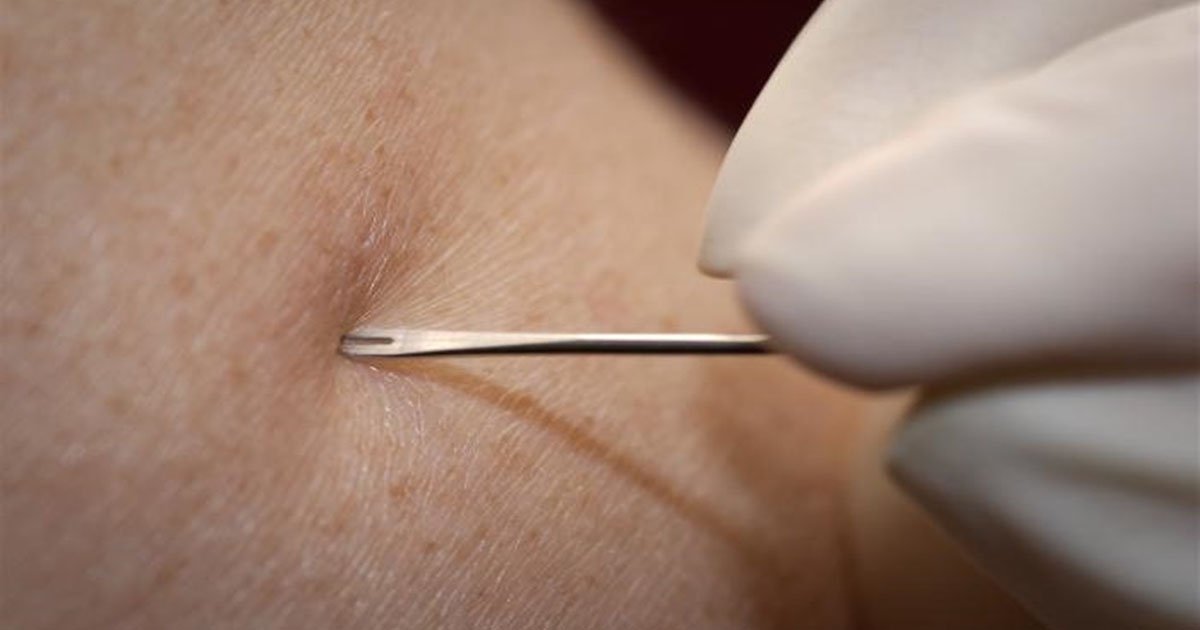 Figure 6. The same day, receiving 15 pokes with a bifurcated needle. Image: James H. Brien, DO
Figure 6. The same day, receiving 15 pokes with a bifurcated needle. Image: James H. Brien, DO Figure 7. A slightly bloody vaccine site after administration. Image: James H. Brien, DO
Figure 7. A slightly bloody vaccine site after administration. Image: James H. Brien, DO Figure 8. A Tegaderm bandage covers the vaccine site. Image: James H. Brien, DO
Figure 8. A Tegaderm bandage covers the vaccine site. Image: James H. Brien, DO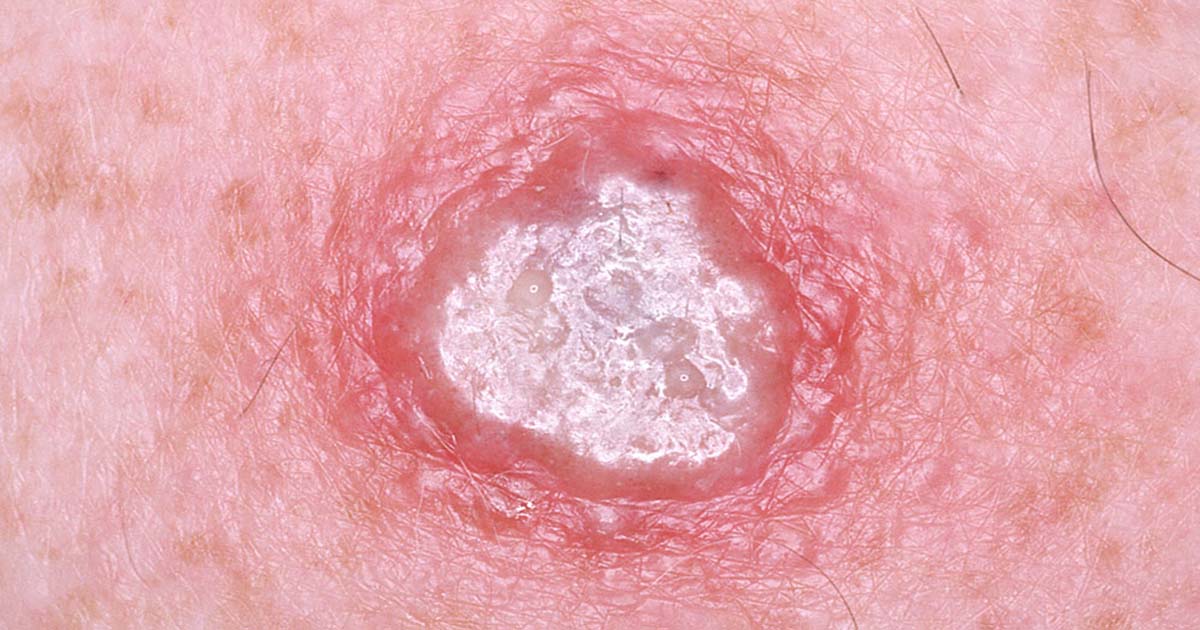 Figure 9. The same vaccine site with the Tegaderm bandage removed on day 6. The bandage was replaced. Image: James H. Brien, DO
Figure 9. The same vaccine site with the Tegaderm bandage removed on day 6. The bandage was replaced. Image: James H. Brien, DO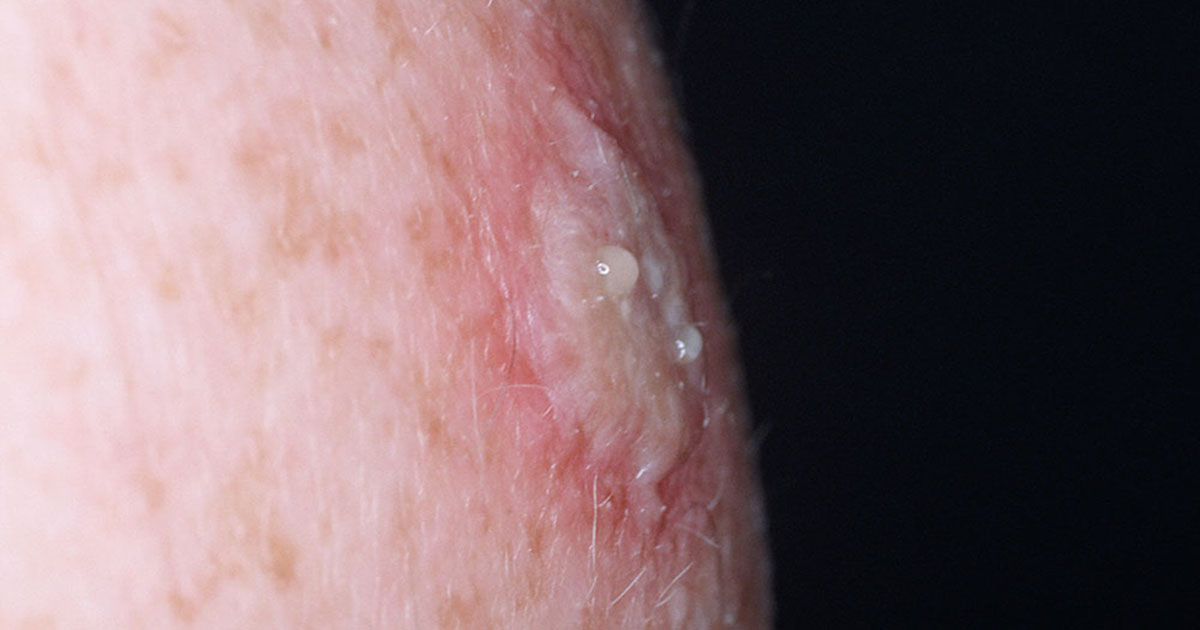 Figure 10. A side view of my vaccine site on day 6, showing the typical large pustule response. Image: James H. Brien, DO
Figure 10. A side view of my vaccine site on day 6, showing the typical large pustule response. Image: James H. Brien, DO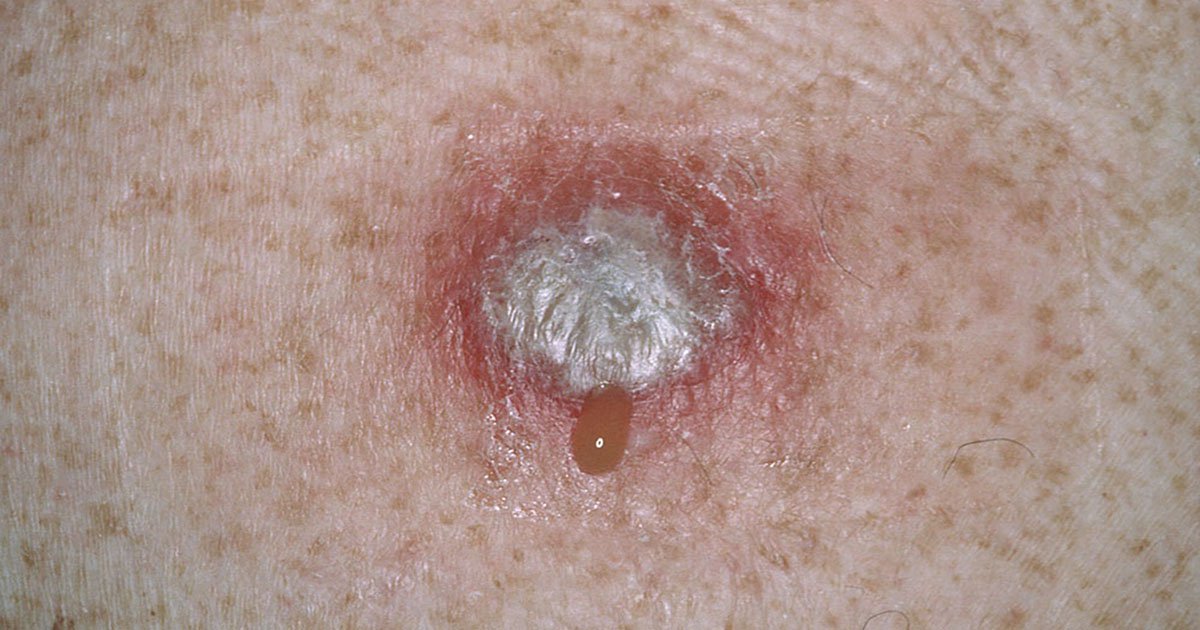 Figure 11. Vaccine site on day 9. Image: James H. Brien, DO
Figure 11. Vaccine site on day 9. Image: James H. Brien, DO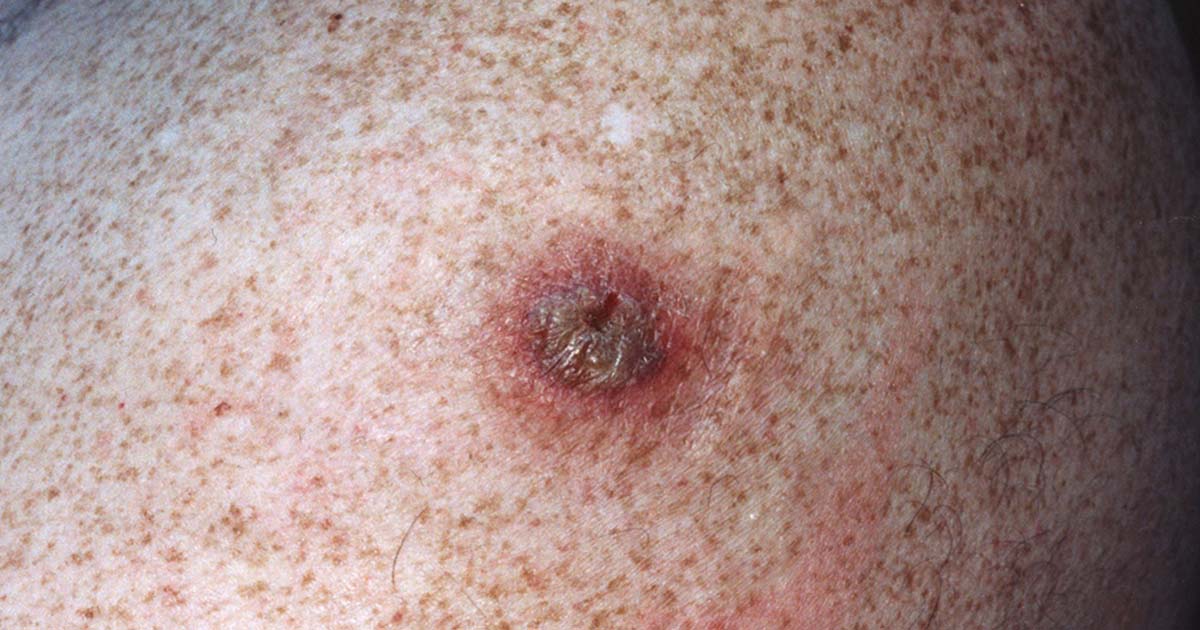 Figure 12. Vaccine site on day 11 — note that the site never made a dry or hard scab because it was covered by the Tegaderm bandage. Image: James H. Brien, DO
Figure 12. Vaccine site on day 11 — note that the site never made a dry or hard scab because it was covered by the Tegaderm bandage. Image: James H. Brien, DOThe original AAP Red Book (1938) makes a strong cautionary point that the smallpox vaccine site was to remain uncovered, without explanation. The decision to keep the area covered was subsequently added, apparently to minimize the risk for autoinoculation or spread to others. The instructions for covering the vaccine in 2003 was to use gauze or similar material that is covered with a semipermeable material, such as Tegaderm, especially for health care providers, who were also encouraged to wear long-sleeved shirts. I had a series of pictures taken of me receiving that vaccine, which shows the current technique using a bifurcated needle with 15 punches (Figures 5 to 12). This covering technique demonstrated an important change in the routine progression of the vaccine site. Historically, it was taught that you should keep the vaccine site covered until the scab became hard and fell off, usually around 2 weeks (Figure 13). However, when covered with a semipermeable substance, the scab forms but remains soft, and may not fall off in the usual fashion.
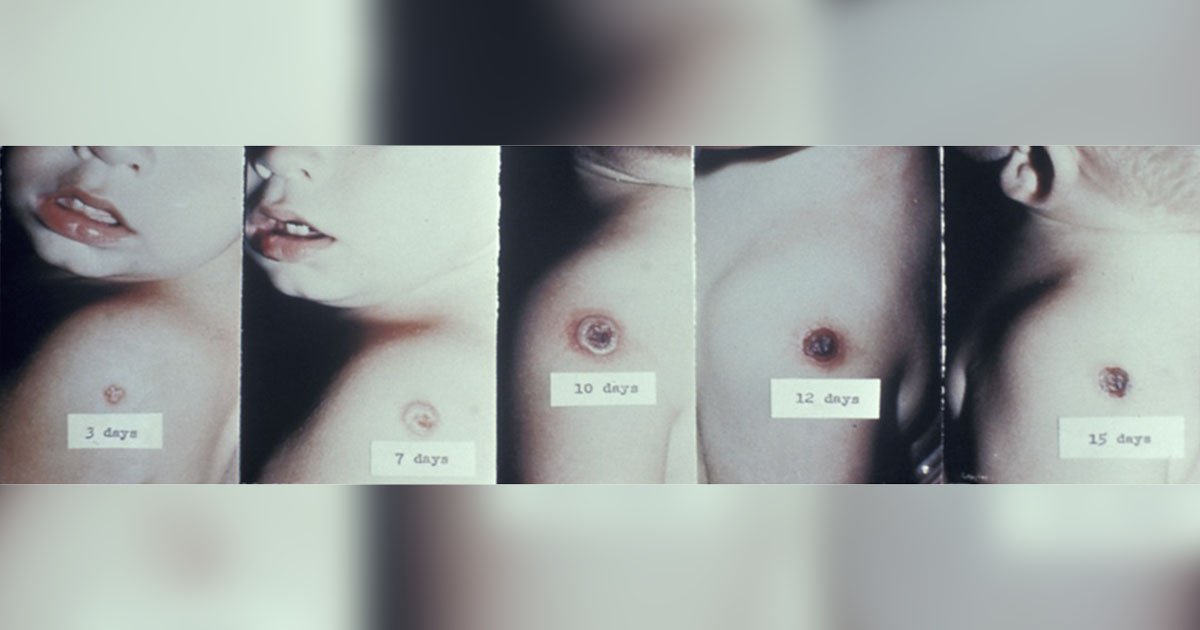 Figure 13. Vaccine progression to a hard scab about to fall off. Image: James W. Bass, MD, MPH
Figure 13. Vaccine progression to a hard scab about to fall off. Image: James W. Bass, MD, MPHLastly, not all reactions to the smallpox vaccine have to do with autoinoculation. Michael Cater, MD, delt with numerous vaccine complications when serving in the U.S. Army in Okinawa between 1972 and 1973, where the vaccine was still being used. Figure 14 shows a child who Dr. Cater diagnosed with an erythema multiforme-like rash after a smallpox vaccine. An article by Erin B. Storie, DO, and Adam D. Perry, MD, in the January 2014 issue of Military Medicine drew attention to this complication, as well as several other military-based papers.
 Figure 14. Smallpox vaccination with erythema multiforme-like rash 2 weeks later. Image: Michael Cater, MD
Figure 14. Smallpox vaccination with erythema multiforme-like rash 2 weeks later. Image: Michael Cater, MDColumnist comments
Note that the CDC has an excellent smallpox site for providers, along with videos on everything important, like how to administer the smallpox vaccine. Regarding the inappropriate use of the word “vaccine” when relating to other immunizations, I can only say “sorry.” My high school English teacher, Mrs. Loma Brannon, put a scar on my brain (I call it my “Brannon scar”) that involuntarily forces me to point out these things. Other inoculations should be referred to as “immunizations,” not vaccines or vaccinations, unless they too can be shown to derive from cows. There, I’ve said it. Please keep in touch anyway.
References:
- American Academy of Pediatrics. Committee on Immunization Procedures. Red Book. 1938 Report of the Committee on Immunization Procedures. https://aap2.silverchair-cdn.com/aap2/content_public/cms/resources/23109/redbook_1938.pdf. Accessed July 10, 2024.
- Berche P. Presse Med. 2022;doi:10.1016/j.lpm.2022.104117.
- CDC. Smallpox vaccination: Information for healthcare providers. https://www.cdc.gov/vaccines/vpd/smallpox/hcp/index.html. Accessed July 10, 2024.
- CDC. History of smallpox. https://www.cdc.gov/smallpox/history/history.html. Accessed July 10, 2024.
- Dattani S, Roser M. Smallpox. Our World in Data. https://ourworldindata.org/smallpox. Last reviewed February 2024. Accessed July 16, 2024.
- Global Polio Eradication Initiative. Remembering Ali Maalin. https://polioeradication.org/news-post/remembering-ali-maalin/. Accessed July 10, 2024.
- Johns Hopkins Bloomberg School of Public Health Center for Health Security. In memoriam: Donald Ainslie Henderson MD, MPH ’60. https://publichealth.jhu.edu/about/history/in-memoriam/donald-a-henderson. Accessed July 10, 2024.
- Johns Hopkins Bloomberg School of Public Health Center for Health Security. Our people: D.A. Henderson, MD, MPH. https://centerforhealthsecurity.org/who-we-are/our-people/d-a-henderson. Accessed July 10, 2024.
- McNeil Jr. DG. D.A. Henderson, doctor who helped end smallpox scourge, dies at 87. The New York Times. https://www.nytimes.com/2016/08/22/us/dr-donald-a-henderson-who-helped-end-smallpox-dies-at-87.html. Published Aug. 21, 2016. Accessed July 10, 2024.
- Microbiology Society. Smallpox has plagued humans since ancient Egyptian times, new evidence confirms. https://microbiologysociety.org/news/press-releases/smallpox-has-plagued-humans-since-ancient-egyptian-times-new-evidence-confirms.html. Published Jan. 9, 2023. Accessed July 10, 2024.
- NIH. Smallpox: A great and terrible scourge. https://www.nlm.nih.gov/exhibition/smallpox/sp_vaccination.html. Accessed July 10, 2024.
- Pead PJ. Lancet. 2006;doi:10.1016/S0140-6736(06)69878-4.
- Riedel S. Proc (Bayl Univ Med Cent). 2005;doi:10.1080/08998280.2005.11928028.
- Storie EB, Perry A. Mil Med. 2014;doi:10.7205/MILMED-D-13-00270.
- Turley PK. AJO-DO Clinical Companion. 2021;doi:10.1016/j.xaor.2021.02.005.
- University of Michigan Library. India engages the pandemic. https://apps.lib.umich.edu/online-exhibits/exhibits/show/smallpox-eradication-india/indian-engages-pandemic. Accessed July 10, 2024.
- Wenger P, et al. Vaccine. 2007;doi:10.1016/j.vaccine.2007.02.087.
- WHO. History of smallpox. https://www.cdc.gov/smallpox/history/history.html. Accessed July 10, 2024.
- WHO. Smallpox. https://www.who.int/teams/health-product-policy-and-standards/standards-and-specifications/vaccine-standardization/smallpox. Accessed July 10, 2024.
For more information:
Brien is a member of the Healio Pediatrics Peer Perspective Board and an adjunct professor of pediatric infectious diseases at McLane Children's Hospital, Baylor Scott & White Health, in Temple, Texas. He can be reached at jhbrien@aol.com.









